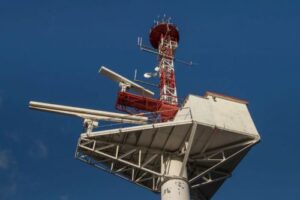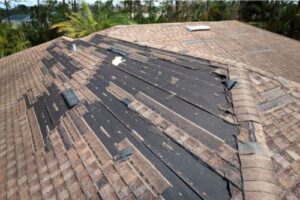Introduction
Roofs are one of the most important parts of any building. They protect homes and businesses from rain, wind, sunlight, and other harsh environmental conditions. But over time, roofs naturally wear down due to weather, debris, and age. Regular inspections are necessary to detect damages early and prevent costly repairs.
Traditionally, roofing inspections involved climbing ladders, walking across steep surfaces, and using binoculars or handheld cameras. This method is not only risky for inspectors but also time-consuming and often incomplete.
Enter drone roofing inspection—a modern solution that is transforming the construction and real estate industry. By using drones equipped with high-resolution cameras and thermal sensors, contractors and homeowners can now inspect roofs safely, quickly, and with greater accuracy.
What is Drone Roofing Inspection?
Drone roofing inspection involves using unmanned aerial vehicles (UAVs) to capture detailed photos, videos, and thermal images of a roof. Instead of sending a person to climb onto the roof, drones fly overhead and provide a clear visual assessment of its condition.
This type of inspection helps in identifying:
-
Cracked or missing shingles
-
Water leaks or moisture buildup
-
Damaged flashing around chimneys or skylights
-
Sagging or weak roof areas
-
Heat loss or poor insulation (using thermal imaging)
How Does Drone Roofing Inspection Work?
a) Pre-Flight Planning
Inspectors plan the drone’s flight path to cover the entire roof surface.
b) Aerial Data Collection
The drone flies over the roof, capturing high-resolution images and videos from multiple angles. Thermal cameras may also be used to detect hidden moisture or insulation issues.
c) Data Processing and Analysis
The captured data is analyzed using specialized software to identify problem areas. AI tools can highlight potential damages automatically.
d) Inspection Report
A detailed report is generated, including images, thermal scans, and recommendations for repair or maintenance.
Benefits of Drone Roofing Inspections
a) Improved Safety
Roof inspections can be dangerous, especially on steep or damaged roofs. Drones eliminate the need for inspectors to climb ladders or walk on unstable surfaces.
b) Faster Process
What used to take hours can now be done in less than 30 minutes. Drones cover large roof areas quickly and efficiently.
c) Cost Savings
Drone inspections reduce the need for scaffolding, ladders, and multiple workers, saving money for both homeowners and contractors.
d) High-Quality Data
Drones provide 4K images and thermal scans, offering more detailed insights than manual inspections.
e) Non-Intrusive
There is no risk of damaging the roof by walking on it, making drone inspections a cleaner, safer option.
f) Accurate Estimates
Contractors can provide more precise repair estimates using drone data, improving customer trust.
Applications of Drone Roofing Inspections
-
Residential Roofing: Detects leaks, damaged shingles, and structural issues.
-
Commercial Roofing: Covers large, flat industrial roofs quickly.
-
Real Estate: Helps buyers and sellers assess roof conditions before transactions.
-
Insurance Claims: Provides documented proof of storm or hail damage.
-
Preventive Maintenance: Identifies small issues before they turn into expensive repairs.
Technology Used in Drone Roofing Inspections
-
RGB Cameras – Capture detailed roof images.
-
Thermal Sensors – Detect moisture buildup, leaks, and insulation problems.
-
3D Mapping Software – Creates detailed roof models for measurements.
-
AI-Based Analysis Tools – Highlight damages automatically.
-
GPS Systems – Ensure accurate and consistent data collection.
Challenges in Drone Roofing Inspections
Although highly beneficial, drone roofing inspections face some challenges:
-
Weather Limitations: Rain, snow, or strong winds can affect flight safety.
-
Legal Regulations: Some regions require drone permits for commercial use.
-
Initial Cost: High-quality drones with thermal sensors can be expensive.
-
Training Requirements: Skilled operators are necessary for safe and efficient inspections.
Case Study Example
A roofing company adopted drones to inspect 50 houses after a severe hailstorm. Instead of taking weeks with ladders and manual checks, they completed all inspections in just 3 days. The drones captured high-quality images that were used to file insurance claims successfully. Customers appreciated the faster service, and the company saved thousands in labor costs.
Future of Drone Roofing Inspections
The roofing industry is moving rapidly towards drone-based solutions. In the future, we can expect:
-
Autonomous Drones – Performing inspections without human pilots.
-
AI-Powered Damage Detection – Automatically detecting cracks, leaks, or missing shingles.
-
Integration with Smart Homes – Real-time roof monitoring systems connected to home automation.
-
Digital Twins – Creating 3D roof models for predictive maintenance and repairs.
Conclusion
Drone roofing inspection is changing the way homeowners, contractors, and insurance companies assess roof conditions. It offers safety, speed, cost savings, and unmatched accuracy compared to traditional methods. Whether it’s a small residential property or a large commercial building, drones provide a smarter way to identify problems before they turn into expensive repairs.
As technology advances, drone roofing inspections will become standard practice in the construction and real estate industry. For anyone responsible for building maintenance, adopting drone inspection is not just a trend—it’s the future of roofing care.



